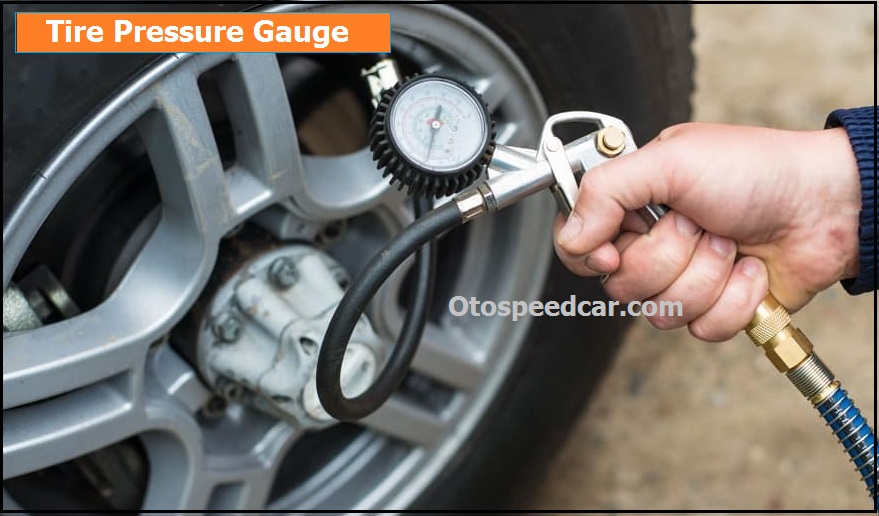Photo: istockphoto.com
Driving is a luxury that many people across the country enjoy, but if proper care isn’t taken to maintain a vehicle, it can result in rapid wear, part failure, and poor control. Tires are one of the features of a car that can sometimes be overlooked, but it’s important to ensure that you know how to use a gauge to check tire pressure. Underinflated tires increase braking distance, reduce steering control, and accelerate tire wear, which can result in complete tire failure. Overinflated tires are not as hazardous, but they can still increase tire wear, affect the wear pattern of the treads, and reduce control. To ensure that your tires are not under- or overinflated, it’s necessary to understand how to use a tire pressure gauge.
Tools & MaterialsIt’s best to check the tire pressure when the tires are cold, such as first thing in the morning or after the vehicle has been parked in the shade for several hours. This helps to increase the accuracy of the readings. In order to test tire pressure, you’ll need to purchase a viable tool such as this tire pressure gauge—a favorite in our researched guide to the best tire pressure gauges.
Learning how to use a low-pressure tire gauge is relatively simple, though you will need to find the manufacturer’s recommended PSI before you can begin. While it may seem like the first thing to do is take out the tire pressure gauge, that wouldn’t get you very far unless you already knew the manufacturer’s recommended PSI for the tires. Given that most people don’t typically memorize this information, it’s a good idea to check and verify before using the tire pressure gauge.
Tire and loading information is commonly included in the owner’s manual, though you may also be able to find it on a sticker on the driver’s side door, near the trunk lid, inside the fuel door, or even inside the console. Look for a two-digit number, like 35, followed by PSI, which means pounds per square inch.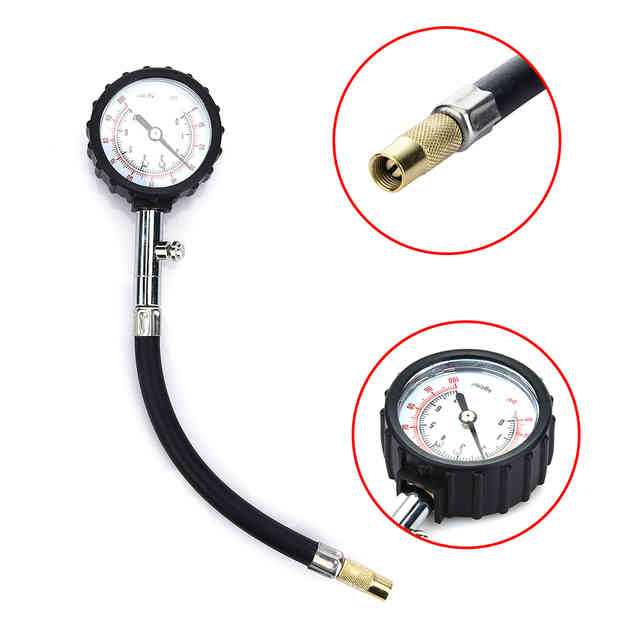
Related: The Best Jump Starters With Air Compressors for Your Car
Photo: istockphoto.com
STEP 2: Locate the tire valve and remove the cap.Each tire has a valve used to inflate or deflate it, depending on the suggested PSI and the current tire pressure. The tire valve is typically a small, black tube about an inch long with a threaded cap. It can commonly be found on the inside of the rubber wheel, protruding through a gap in the hubcap. Locate this valve, then remove the threaded cap so that the tire pressure gauge can fit over the top of the valve. Make sure to keep track of the tire valve cap because it’s very small and easy to lose.
STEP 3: Press the gauge onto the tire valve.The next step to learning how to use a tire pressure gauge is to simply press the gauge down onto the tire valve after the threaded cap has been removed. Each tire valve contains a spring-loaded valve core that automatically seals itself using air pressure from inside the tire. By pressing the gauge against the valve core, the gauge opens the valve to the internal air pressure of the tire and allows the gauge to act as the seal while simultaneously measuring the tire’s PSI rating.
By pressing the gauge against the valve core, the gauge opens the valve to the internal air pressure of the tire and allows the gauge to act as the seal while simultaneously measuring the tire’s PSI rating.
The tire pressure gauge should be held firmly against the open tire valve so that no air is escaping. If the tire pressure gauge is making a hissing sound, you need to adjust the angle of the gauge inside the tire valve until it is silent. This indicates that the tire pressure gauge is measuring the full tire pressure instead of getting a partial reading due to escaping air. To check the reading on the tire pressure gauge, simply read the slide ruler for manual pen gauges, the dial for dial pressure gauges, or the digital screen for digital pressure gauges. The ruler, dial, or screen should display the current tire pressure in PSI.
Photo: istockphoto.com
After taking the tire pressure measurement, write down the current pressure for each tire so that you don’t forget and need to check again.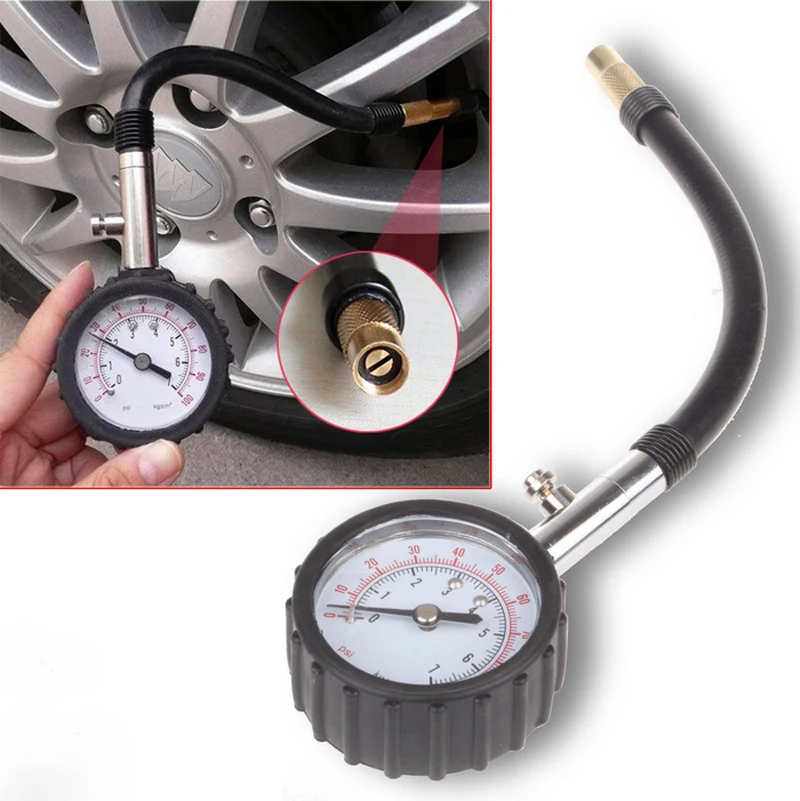 If the pressure within each tire is too high, you can easily drain some air by holding the tire pressure gauge against the tire valve at an angle, listening for the hiss of escaping air. Periodically check the tire pressure to ensure that you don’t drain too much air and stop once you reach the desired PSI.
If the pressure within each tire is too high, you can easily drain some air by holding the tire pressure gauge against the tire valve at an angle, listening for the hiss of escaping air. Periodically check the tire pressure to ensure that you don’t drain too much air and stop once you reach the desired PSI.
If the pressure within the tire is too low, connect an air compressor such as this portable inflator—a favorite in our researched guide to the best tire inflators—to the tire valve to inflate it. After inflating the tire, use the tire pressure gauge to check the PSI and make sure it is now at the correct level according to the manufacturer’s recommendations.
It’s advised to check the tire pressure on your vehicle at least once per month to ensure that you are safe while driving and not doing any unexpected damage to your tires.
RELATED: I Tried a Cordless Tire Inflator―Did It Work?
Final ThoughtsEffectively using a tire pressure gauge is a necessary skill for a driver to have in order to be certain that their vehicle is properly maintained. Additionally, by checking the tire pressure of the vehicle, drivers can ensure that they are getting the most out of each tire, instead of accidentally causing premature wear and tear due to overinflated or underinflated tires. Also, keep in mind that you can deflate a car tire with only a tire pressure gauge, but to fill the tire you will need access to an air compressor and a suitable attachment for filling tires. Consider investing in a home air compressor or find a local gas station that has one available for use.
Additionally, by checking the tire pressure of the vehicle, drivers can ensure that they are getting the most out of each tire, instead of accidentally causing premature wear and tear due to overinflated or underinflated tires. Also, keep in mind that you can deflate a car tire with only a tire pressure gauge, but to fill the tire you will need access to an air compressor and a suitable attachment for filling tires. Consider investing in a home air compressor or find a local gas station that has one available for use.
Automotive>Tires & Brakes | Maintenance & Repair
November 10, 2022
According to a survey conducted by the U.S. Department of Transportation's National Highway Traffic Safety Administration (NHTSA), nearly 12% of the nation's passenger cars have at least one tire underinflated by 25% or more. Considering tire pressure can affect things like handling, braking, riding comfort, mileage and safety, that's a surprising statistic.
Considering tire pressure can affect things like handling, braking, riding comfort, mileage and safety, that's a surprising statistic.
Purchasing new tires can be a pretty involved process. There's a lot to consider when making such an important purchase, especially if you're not a car enthusiast or expert.
Many late-model cars are equipped with a tire pressure monitoring system (TPMS), which is an internal car system that alerts you when one or more tires are significantly underinflated by displaying the yellow low-tire indicator on your dashboard. Resetting your car's TPMS after the tire(s) are inflated depends on the car model, as well as whether or not you have a direct or indirect TPMS.
Tip: Tires normally lose a small amount of air pressure every day. Left unchecked, that can add up to a problem.
There are recommended techniques for both reaching and maintaining tire pressure and reducing tire wear. In fact, according to the U.S. Department of Energy, driving on underinflated tires can cause unsafe handling problems, as well as contribute to tire wear and reduced gas mileage.
Tire pressure is measured in pounds per square inch (psi). The recommended tire pressure or psi specified by your vehicle's manufacturer or on the tire itself is there to ensure that you get optimum performance every time you drive. This includes optimum tire wear and comfort.
Granted, underinflating your tires to make them softer can result in a smoother ride and a larger contact patch (area) with the road surface. But not without some tradeoffs.
When an underinflated tire (even by as little as 6 psi) hits a pothole, it increases the possibility of damaging it. With decreased tire pressure, the center of the tire's tread bows in slightly, causing the tire to ride on its outer edges. The result is excessive wear on the tire's inner and outer shoulders. In addition, the softer sidewall of an underinflated tire can exaggerate the sway your vehicle experiences when cornering, and may cause a top-heavy vehicle to roll over.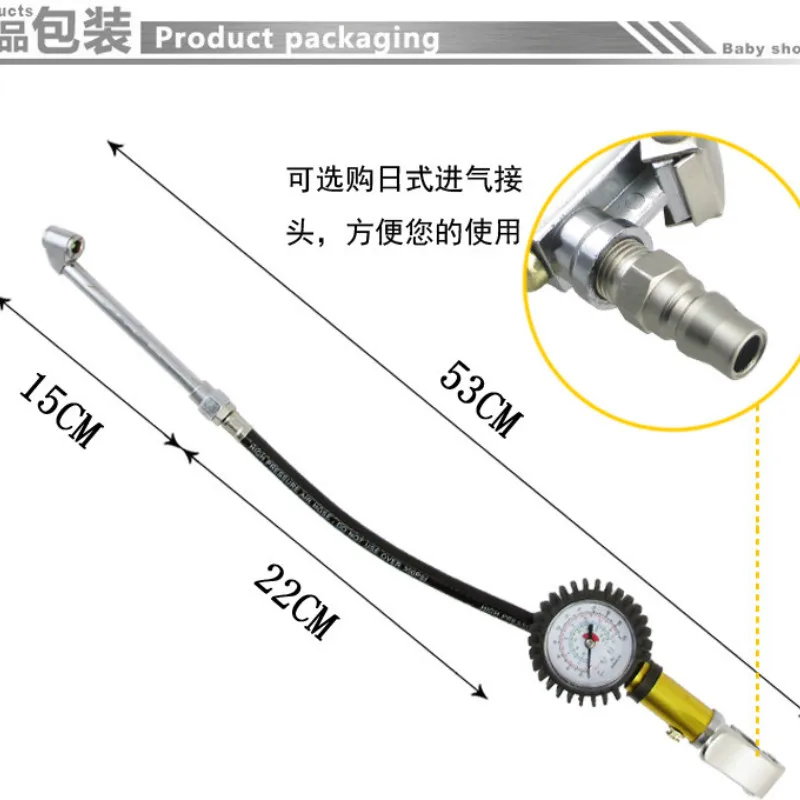
Tip: Make it a habit to check your tire pressure once a month.
Ultimately, low tire pressure can shorten the lifespan of your tires. Having the correct pressure in car tires also helps you get good gas mileage. To understand the recommended tire pressure for your vehicle, review the tag on the inside of the door.
Here are 6 steps to follow when checking the tire pressure:
 (Hold off on this step if you need to adjust the air pressure.)
(Hold off on this step if you need to adjust the air pressure.) If too low, continue to add air in short bursts and recheck. If you add too much, let out some air by pressing the pin in the center of the tire valve with the back of the air hose nozzle or your tire gauge. Generally, the tire will let out approximately one psi for every three seconds the pin is depressed.
If too low, continue to add air in short bursts and recheck. If you add too much, let out some air by pressing the pin in the center of the tire valve with the back of the air hose nozzle or your tire gauge. Generally, the tire will let out approximately one psi for every three seconds the pin is depressed.Having trouble getting air in your tires or not sure if you've got the right pressure? Just keep checking periodically until you get it right.
Tip: Driving heats up your tires, which increases the psi. It's best to check them in the morning while they are still relatively cold. You can also check them after your car has been sitting for a few hours or driven for just a few miles.
Learn more about the benefits of Synchrony Car Care today. With the right partner, you'll be prepared for all your car maintenance needs.
 fueleconomy.gov/feg/maintain.jsp
fueleconomy.gov/feg/maintain.jspDisclaimer: We include links to other websites in this article for our convenience. We do not endorse any content on these sites. All product names, logos, and brands are property of their respective owners. All company, product and service names used in this website are for identification purposes only. Use of these names, logos, and brands does not imply endorsement. This content is subject to change without notice and offered for informational use only. You are urged to consult with your individual advisors with respect to any information presented. Synchrony and any of its affiliates (collectively, “Synchrony”) make no representations or warranties regarding this content and accept no liability for any loss or harm arising from the use of the information provided. Your receipt of this material constitutes your acceptance of these terms and conditions.
You are urged to consult with your individual advisors with respect to any information presented. Synchrony and any of its affiliates (collectively, “Synchrony”) make no representations or warranties regarding this content and accept no liability for any loss or harm arising from the use of the information provided. Your receipt of this material constitutes your acceptance of these terms and conditions.
© 2023 Synchrony Bank.
©2023 SYNCHRONY BANK
What is a TPMS sensor?
The TPMS sensor is a device attached to the valve stem located on the wheel. The functions of the TPMS sensor are: 1. Hold air in the wheel/tire assembly, 2. Measure air pressure, and 3. Transmit data over the air.
What is a universal TPMS sensor?
Generic sensors are non-genuine equipment (OE) TPMS sensors used in the replacement market. Programmable sensors and multi-protocol sensors are considered universal sensors.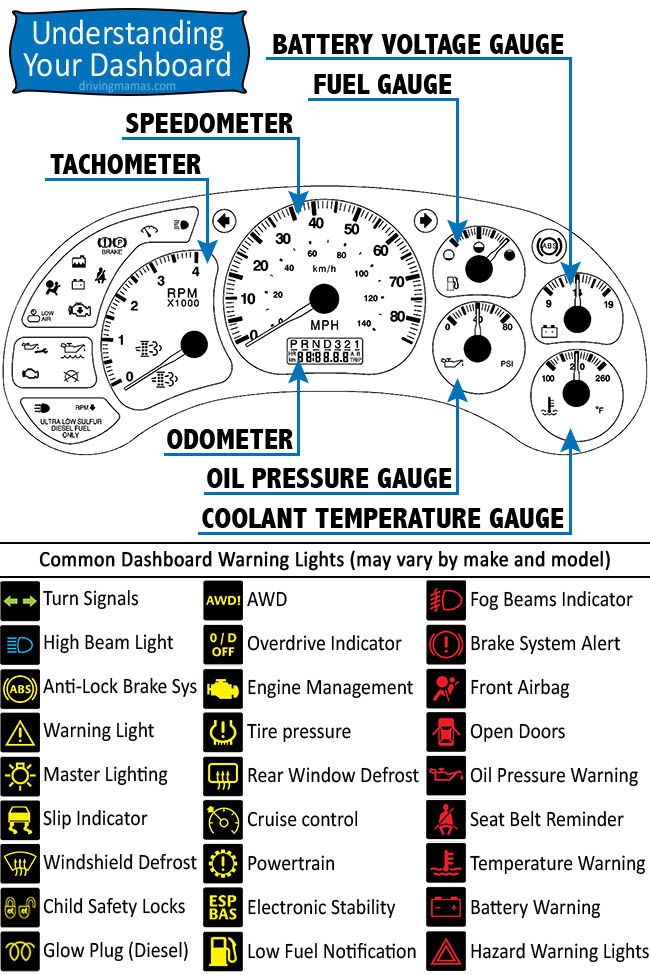
What is the difference between a programmable sensor and a multiprotocol sensor?
Programmable sensors must be programmed using the TPMS Tool according to the specifications of the vehicle in which they are installed.
After recording, most programmable sensors provide the same information as the original equipment sensors. Multi-protocol sensors have several specific protocols pre-loaded into the sensor.
In other words, they are designed for passenger cars of different makes, models and years of production from different manufacturers. Typically, these sensors do not require programming, but also require several different part numbers.
How do I know if the sensor battery is dead?
In most cases you won't do this unless the warning light flashes intermittently for 60-90 seconds, but you still need to retrieve the codes and check the sensor. It is best to take the car to an authorized service center for testing, for example, to the service of our company “80 wheels”.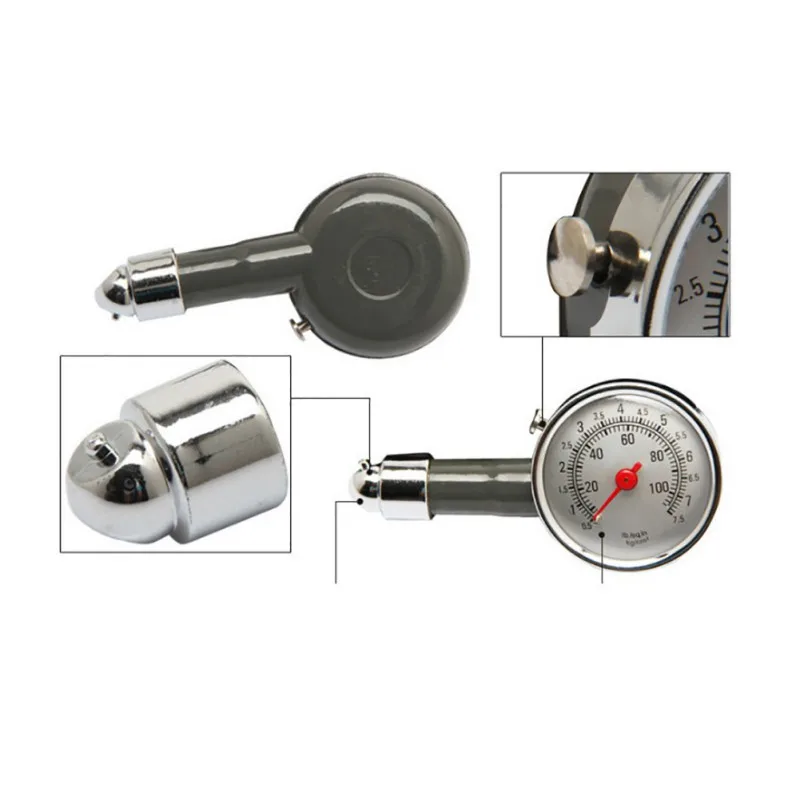
I just changed the wheels/swapped. Do I need to do something on my TPMS system?
80wheels recommends relearning sensors after swapping wheels. This way the TPMS system knows the exact location of each sensor/wheel.
What are the advantages of tire pressure monitoring systems?
Tire pressure monitoring systems or TPMS provide real safety and cost benefits for car owners.
By helping drivers keep their tires properly inflated, TPMS can help improve ride and handling, reduce stopping distances and reduce the chance of hydroplaning.
TPMS can also reduce fuel consumption and extend tire life.
The TPMS is designed to monitor tire pressure and send an alert to the vehicle's on-board monitoring system when the pressure drops below a predetermined limit.
Can't I tell if my tires are flat just by looking at them?
You can't always tell if a tire is under-inflated just by looking at it.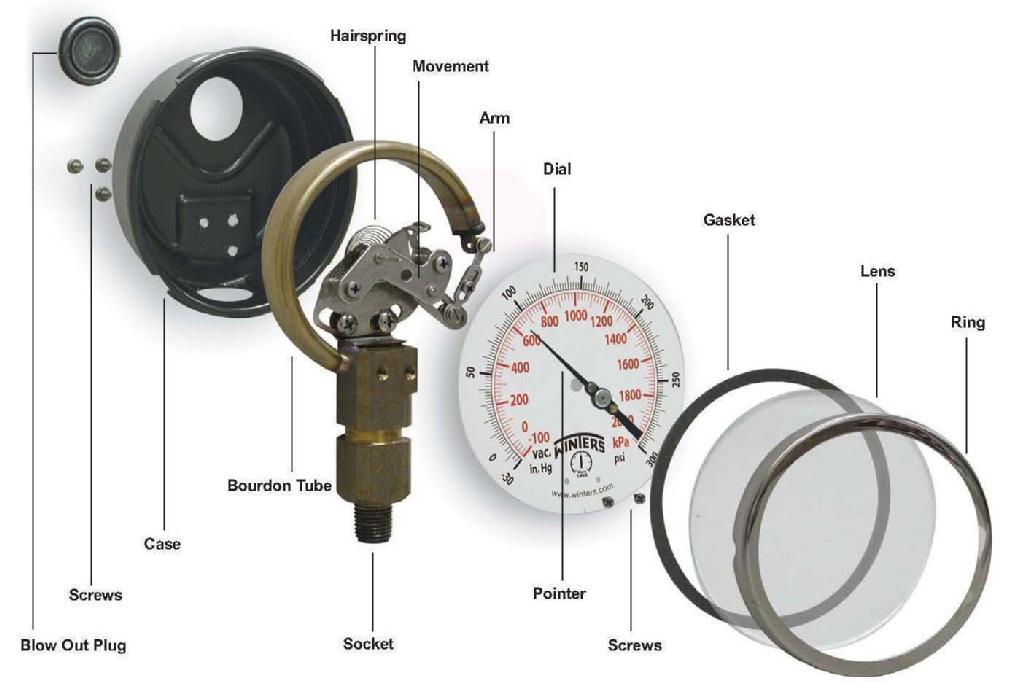 You cannot easily tell if a tire is under-inflated by kicking or pressing on it.
You cannot easily tell if a tire is under-inflated by kicking or pressing on it.
The only way to accurately check tire pressure is to use a quality pressure gauge. A tire can lose air pressure, but it doesn't look like it's under-inflated.
The visual difference between a properly inflated and an under-inflated tire is very small.
I have a Honda CRV and was told that I don't have TPMS sensors, but I do have a TPMS warning light.
Some car manufacturers have chosen to use an indirect TPMS system, which uses algorithms that use anti-lock brake sensors and other systems to measure wheel rotation.
Wheels spinning faster than others indicate lower tire pressure and trigger a TPMS warning.
How long should my TPMS sensors last?
TPMS sensor life will vary depending on several factors including temperature (cold can shorten sensor life as well as excessive humidity), garage or outdoor parking, daily mileage, maintenance of the TPMS sensor.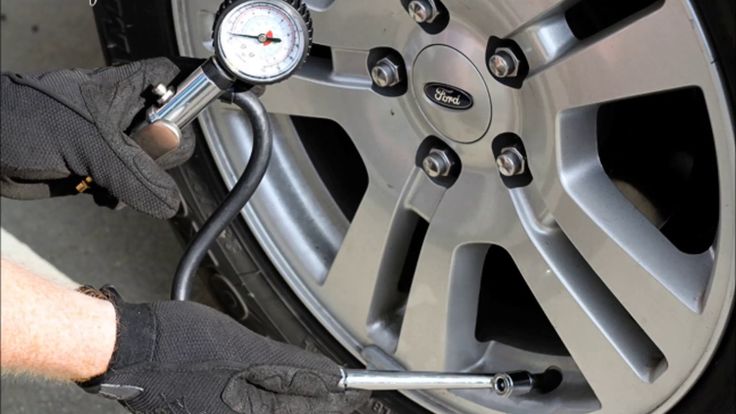
You can typically expect a sensor to last between 7 and 12 years before it fails under typical driving conditions.
How soon after the TPMS light comes on should I check my tire pressure?
You should stop as soon as possible to check and make sure all your tires are in good condition. Driving at extremely low tire pressure can result in an accident or damage to the rubber and rim.
If the tires seem to be deflating, find a service center that can check the air pressure when possible.
Can the TPMS sensor battery be replaced?
No. The battery in the sensor cannot be replaced. The case is sealed to protect the internal components, including the battery, in the harsh conditions inside the tire.
Why does my car have a tire pressure monitoring system (TPMS)?
Starting with model year 2008, some departments of transportation require the installation of a tire pressure monitoring system on all new passenger cars, multi-purpose cars, trucks and buses weighing up to 4500 kg (excluding vehicles with twin wheels on axles).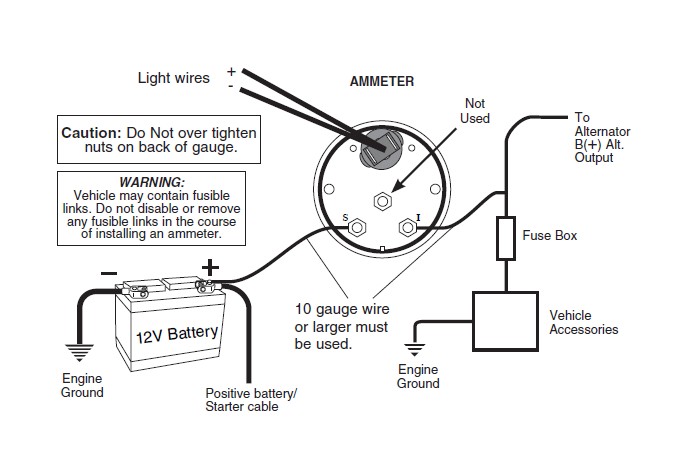
A law requiring TPMS sensors was passed in response to rollover deaths caused in part by vehicles with under-inflated tires.
What does it mean if the TPMS warning light starts flashing and then goes off after a minute or more?
A flashing TPMS warning light (looks like a horseshoe) or illuminated TPMS letters indicates a TPMS failure.
This means that the system is not working properly and needs to be diagnosed by a workshop.
This could be a faulty sensor(s), or another component in the system, or an inability to properly reprogram the vehicle's sensor IDs.
What does it mean when a store tells me they have to write IDs into the computer?
Each TPMS sensor has a unique ID number so the vehicle's TPMS controller can locate that ID and the wheel.
Identification numbers are written using the Relearn procedure to the TPMS controller.
This allows a trained technician to test the location of the failed sensor(s) and the equipment can show the correct air pressure based on the location.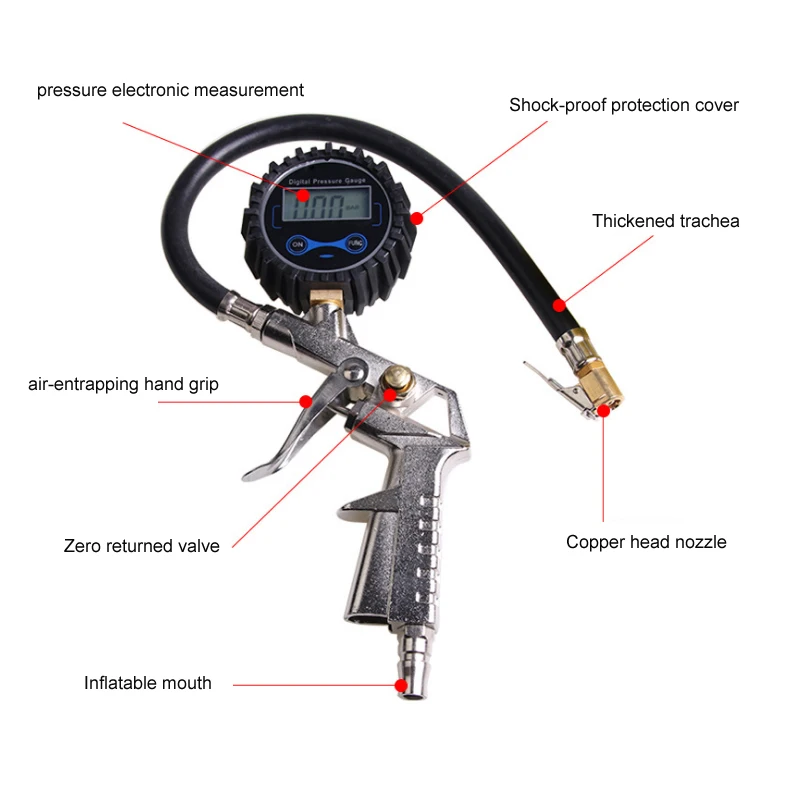
Most retraining requires a properly formatted TPMS tool.
Why am I charged for TPMS retraining when I change tire positions?
When wheels and tires are rotated, or tires are changed, the TPMS sensors move to a different location on the vehicle.
Repair technicians must perform a function known as vehicle retraining. The specialist will use equipment, a TPMS scan tool or tool to complete this task.
This task requires training, equipment and time, which is why many tire retailers and car service providers charge for services.
Why should I make sure my TPMS is working properly?
Low tire pressure is one of the main causes: air leaks leading to an accident resulting in death/injury, excessive tire wear, poor handling, reduced fuel efficiency, reduced effectiveness of the vehicle's stability control system.
Why does the TPMS light stay on?
Typically, this means the wheel is in a low pressure condition, at least 25% below the pressure indicated on the driver's door pillar decal.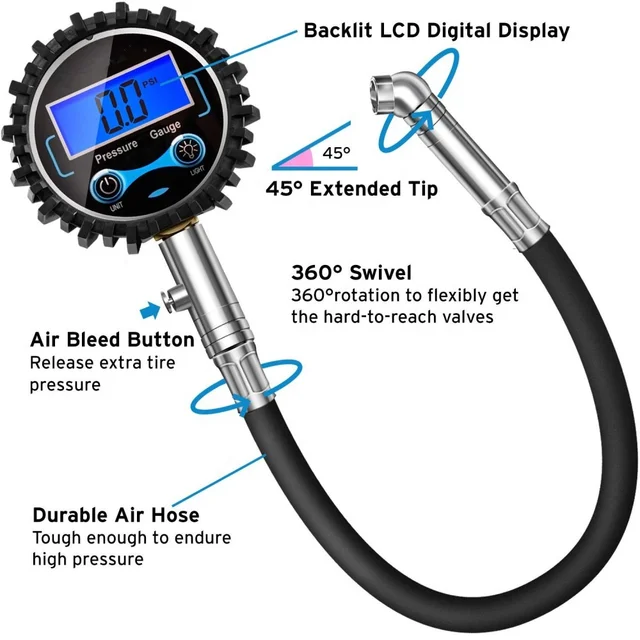
Can I replace the TPMS sensors myself or have a friend who works with cars do it?
A tire changer is required to replace TPMS sensors. After installation, the wheel must be re-balanced.
If you or a friend has access to a tire changer and balancer, as well as the appropriate tools for installing sensors and re-learning procedures, you can attempt to replace the sensor.
However, we recommend that you contact a reputable repair shop to have the sensor installed and retrained.
TPMS equipment is a useful option that is equipped with modern cars. TPMS monitors the tire pressure and signals the change in the parameter to the on-board computer.
If such equipment is installed on your car, this is not an obstacle to fast and high-quality tire fitting. But it is difficult to cope with this task on your own, since the use of specialized equipment is required.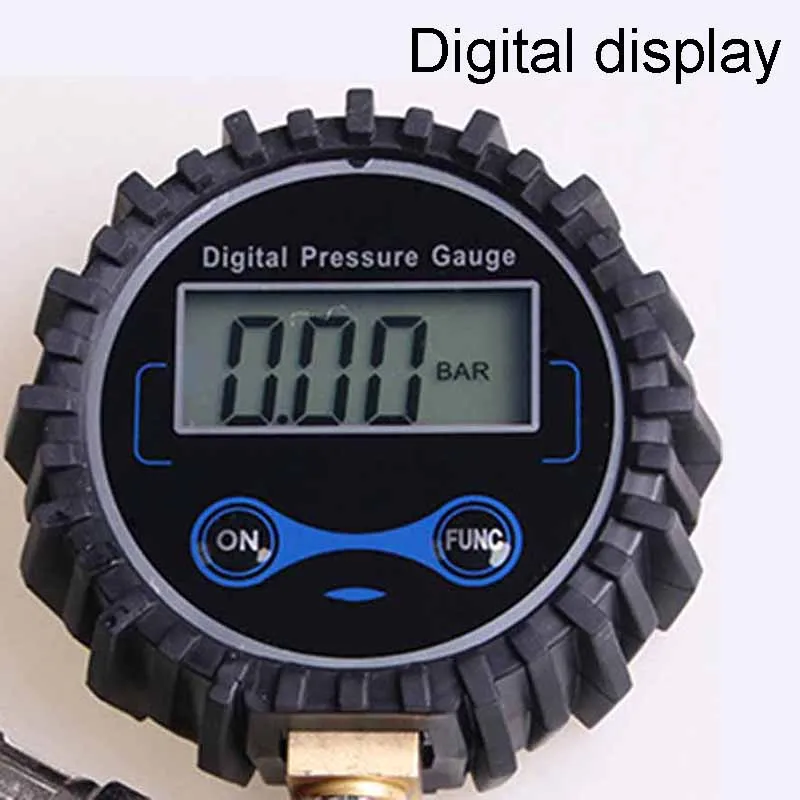 To the question of how to tire with pressure sensors, the answer is simple - visit Tuningberg LLC, where experienced craftsmen will perform the work in the shortest possible time. Our mechanics visually determine the presence of control equipment, but it is safer to warn about the gadget in advance, since the sensors are very fragile and prone to breakage.
To the question of how to tire with pressure sensors, the answer is simple - visit Tuningberg LLC, where experienced craftsmen will perform the work in the shortest possible time. Our mechanics visually determine the presence of control equipment, but it is safer to warn about the gadget in advance, since the sensors are very fragile and prone to breakage.
Control and measuring devices are made of two types: external and internal.
When replacing wheels, increased accuracy is required, which will be provided by our masters.
The installed pressure sensor is not a serious obstacle, but requires precautions when mounting or dismantling the rubber.
During the process, it is unacceptable to apply external influence to the device. From the description it is clear that it is impossible to carry out work without having the skills and without the use of specialized equipment.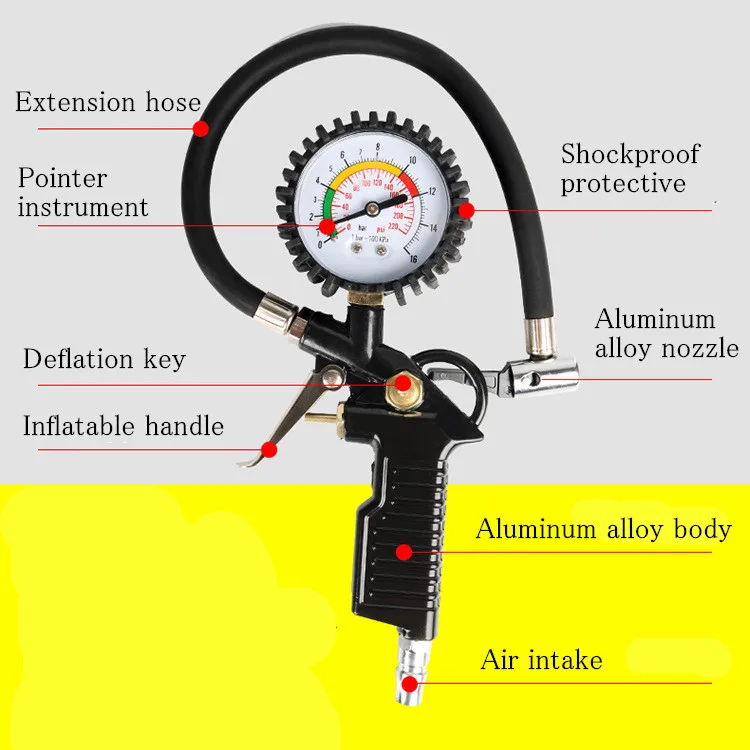
If your car is equipped with such equipment, be sure to contact a car service to reinstall seasonal tires. The question arises whether it is possible to install devices on both sets of wheels and replace them yourself. No, it causes difficulties.
After installing the wheels, the computer does not perceive the signal, and this is normal, since the cars standing nearby will transmit information that does not correspond to reality, therefore, recoding of the control equipment is required. This operation is carried out quickly:
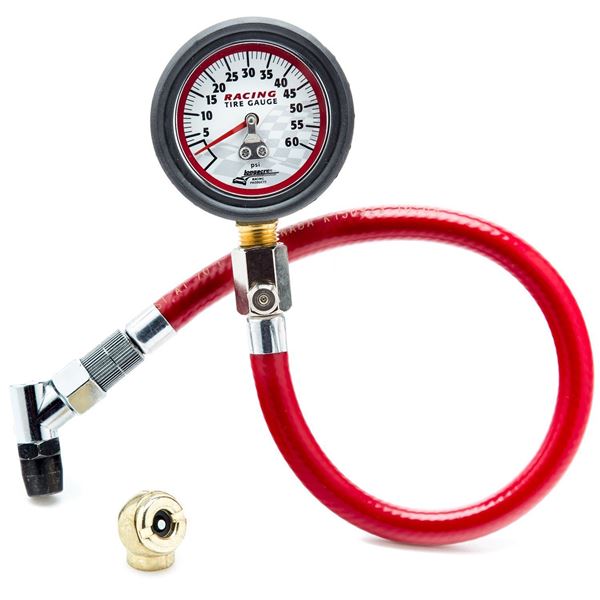
After that, the circuit returns to normal and functions properly.
Our company employs qualified mechanics with extensive experience in tire fitting of wheels equipped with pressure sensors. They use modern high-tech equipment and follow the recommended work steps exactly. As a result, our customers are protected from marriage and breakdowns.
Independent work can lead to malfunctions of complex equipment, the elimination of which will require time and additional costs.
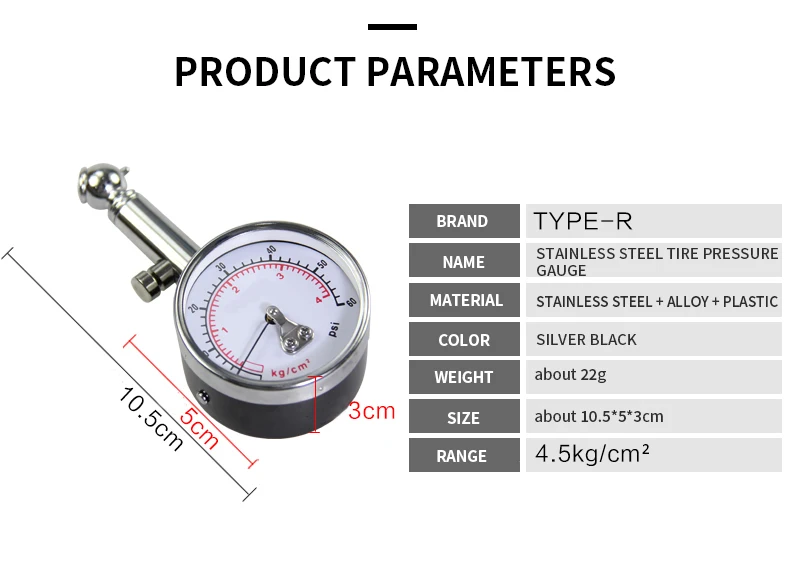 We have transparent and open pricing, we do not impose unnecessary repairs.
We have transparent and open pricing, we do not impose unnecessary repairs. Call and come. The employees of Tuningberg Ltd. are ready to cope with the most difficult problem. Our company is a reliable and responsible partner.
array ( [ID] => 59[~ID] => 59 [IBLOCK_ID] => 6 [~IBLOCK_ID] => 6 [NAME] => How to tire change tires with pressure sensors [~NAME] => How to tire change tires with pressure sensors [PREVIEW_TEXT] =>
Installed tire pressure sensors can complicate self-mounting tires, as the whole procedure for changing tires will change a little. In this article, you will learn how professionals carry out tire fitting of wheels with pressure sensors and what nuances you should pay attention to. And also why it is better to turn to professionals, and not try to do it yourself.
[~PREVIEW_TEXT] =>
Installed tire pressure sensors can complicate self-mounting tires, as the whole procedure for changing tires will change a little.